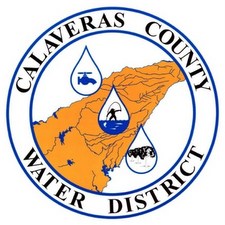San Andreas, CA…Over the past few months, harmful algal blooms (HABs) have been identified in Calaveras County and throughout California by the State Water Resources Control Board, including in New Melones and New Hogan reservoirs (click here for more information). In light of these concerns, the Calaveras County Water District collected water samples in all rivers, lakes and reservoirs that are used to supply drinking water to customers and sent them to a lab for analysis. All test results came back negative for HABs, which means that harmful algae was not present at those sampling locations.

CCWD took samples at the following locations:
- White Pines Lake at the community park
- Hunter Reservoir in Avery
- CCWD tunnel tap off of the Collierville tunnel in Avery
- San Antonio Creek in Sheep Ranch
- Lake Tulloch on Black Creek Arm at the Copper Cove HOA Kiva boat docks
- Middle Fork of the Mokelumne River at pump station on Charles Ave. in West Point
- Bear Creek at Robinville Drive in West Point
- Regulating Reservoir off of Winton Road in West Point
- New Hogan Reservoir at the northwest arm in Valley Springs
If a HAB is present in a community water source, the treatment technology used at the District’s water plants is highly likely to remove all harmful algae. However, the most prudent way to protect the water supply is to eliminate HABs at the source.
In addition to testing drinking water supplies, CCWD also took samples at the treated wastewater storage pond on Sandalwood Drive in Forest Meadows. Although the test results were negative for HABs, the storage pond has experienced particularly aggressive algae blooms this year. While these algae blooms are not toxic, CCWD is taking steps to remove algae from the pond and remediate the situation.
Over the past five years, warmer temperatures in the summer have led to an increase in algae blooms. HABs are problematic because they can affect multiple beneficial uses including recreation, aquatic life, and drinking water by reducing aesthetics, lowering dissolved oxygen concentration, causing taste and odor problems, and producing potent toxins, according to the State Water Board.
Per the State Water Board, dogs and children are most likely to be affected by HABs, because of their smaller body size and tendency to play in the water for longer periods. Dogs are especially susceptible, because they swallow more water while swimming and are less deterred by unsightly, smelly water that may contain HABs.
Even though all of CCWD’s testing came back negative for HABs, residents should be aware that toxins could develop after testing occurred or be present in other portions of these bodies of water, even if an algae bloom is not visible. CCWD urges residents to take the precautionary measures recommended by the State Water Board:
- Heed all instructions on posted advisories, if present
- Avoid algae and scum in the water and on the shore
- Keep an eye on children and pets (dogs)
- If you think a HAB is present, do not let pets and other animals go into or drink the water, or eat scum/algal accumulations on the shore
- Don’t drink the water or use it for cooking
- Wash yourself, your family and your pets with clean water after water play
- If you catch fish, throw away guts and clean fillets with tap water or bottled water before cooking
For more information about precautionary measures that can be taken, click here. To report algae blooms, go to the California HABs Portal. CCWD takes HABs seriously, and will continue monitoring public water supplies to protect public health and safety.
For more information go to www.ccwd.org or contact the Customer Service Department at customerservice@ccwd.org or (209) 754-3543.


